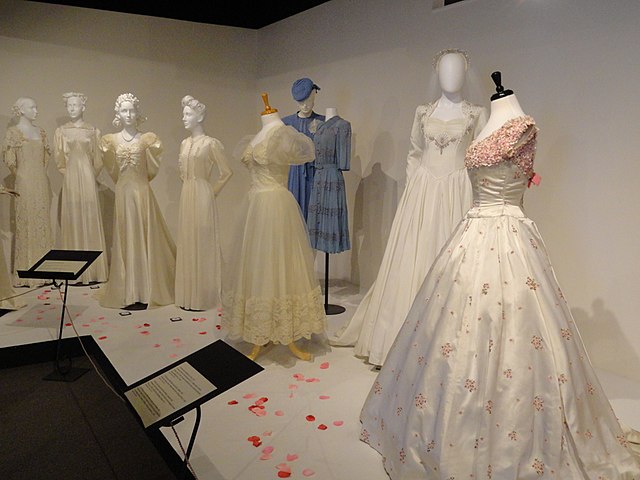Fashion through the decades
A visual of fashion through the decades. Image from Wikimedia Commons
In the world of fashion, there is a lot to try and cover; it can be overwhelming. The customary questions always being asked are what are the trends? How are they determined? Why are they chosen? Then there are the people that only know the icons: Coco Chanel, Karl Lagerfeld, and the occasional Diane von Furstenberg. But how does that all correlate into one huge cluster? The designers are the creators, the artists. That much we do know. However, the articles of clothing are simply their art.
Fashion is a word that expresses something that is part of everybody’s life. It is art, expression, and happiness all in one. To look at the history of fashion accurately and precisely, it must be done by era. Take the early 1900s for instance, this brought the Belle Epoch era (otherwise known as the Beautiful Era). This was the age of simplicity, ladies no longer needed frilly trimmings and elaborate dressings. Of course, war was the main drive behind this. Slowly throughout this came the Art Nouveau, then Edwardian day and nightwear, the unbearably tight corsets, until 1910.
1910 was the year for one of the most iconic fashion designers in history. The one and only, Paul Poiret. He traded the corset out for a brassiere. The hobble skirt became the new trend. Though Poiret decided enough was enough for corsets, others did not. There were still many distinctive styles being produced, anywhere from Edwardian corsets to S-bend corsets. The corset exaggerated the female figure, and designs started to turn more natural. Dresses came and went and tailored items were a definite fad. There were dresses dedicated to certain times of the day. In with the new and out with the old, an entirely new era came forward. In a way, Coco Chanel had her very own era. Chanel adored everything simple. The shift or chemise dress, jumpers, and cardigans. All of this was coming into a new world of fashion.
The flappers and the 1920s were a bunch of jazz. Women could show their knees…people! The 1930s was an era of depression, apart from Hollywood and the glamour girls. The 1940s were a time for women to wear pants and start being truthfully comfortable with themselves. Katherine Hepburn was the ultimate hero for young women all over the world because of her use of fashion to spread a message of equality. The 1950s was a whole look, the most popular show on air at the time could sum up the fashion of that decade. That show being, “I Love Lucy”. Women dressed up in tailored dresses, pinned-up skirts, tight tops, and bobby socks with heels. Even if they were expected to stay in the house to cook and clean, it was crucial to look your best. The 1960s was free to love and girls were expressing their inner hippiness. Gogo boots and tight, short bright dresses were here to stay. This blended into the 1970s. More florals, platforms, hot pants, and noticeably short shorts. It was the sexual revolution, and the girls were daring, especially with their outfits.
Furthermore, the only way to even begin to describe the 1980s is outrageous. We are talking neon, PVC, ripped tights, fishnets, blazers, and pastels galore! Everybody looked like a road sign in the ’80s. The ’90s ushered a whole recent look. If it was dark and grungy, somebody had it on. Baggy jeans, baseball hats, cropped tube tops, and combat boots were the staple pieces. The early 2000s and 2010s come down to two things; layered pieces over each other and tiny shoulder bags. Everything pink and glittery was the new craze. If any girl dressed like Sharpay Evans, they were the IT girl. Nowadays, simplicity is elegant. Unbelievably, many of the recent designs are inspired by vintage trends and being mixed with new and fresh looks. There is a new fashion breed.
The bottom line is every single piece of clothing or decade of “trends” was influenced by what was going on in the world. The ’90s territory was full of angst, but on the other hand in the form of fashion, the ’40s was an embracement and equality statement for women. Ladies had the opportunity to wear pants like men. The ’70s allowed women to possess a free spirit and soul. Their clothes were symbols of who they were and what they were feeling. The Great Coco Chanel said it best, “Fashion is not something that exists in dresses only. Fashion is in the sky, in the street, fashion has to do with ideas, the way we live, what is happening”.

